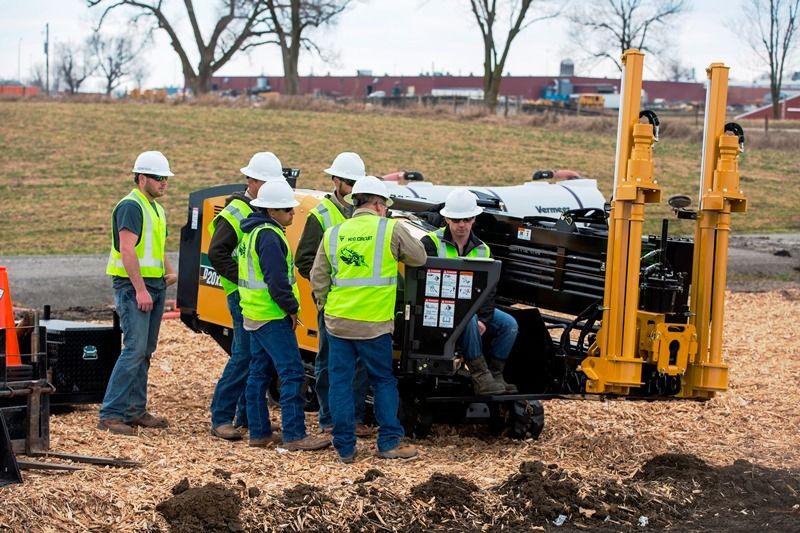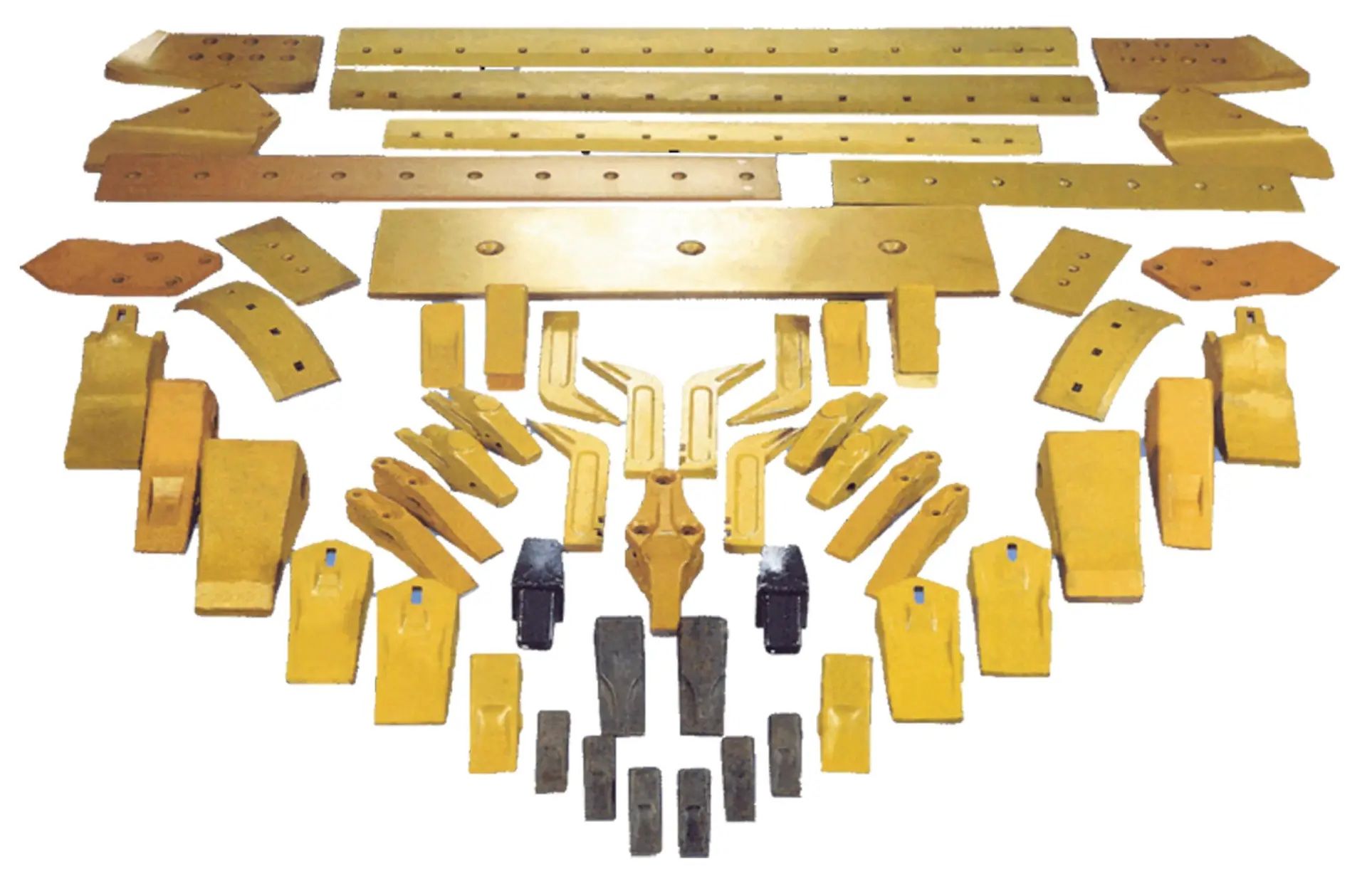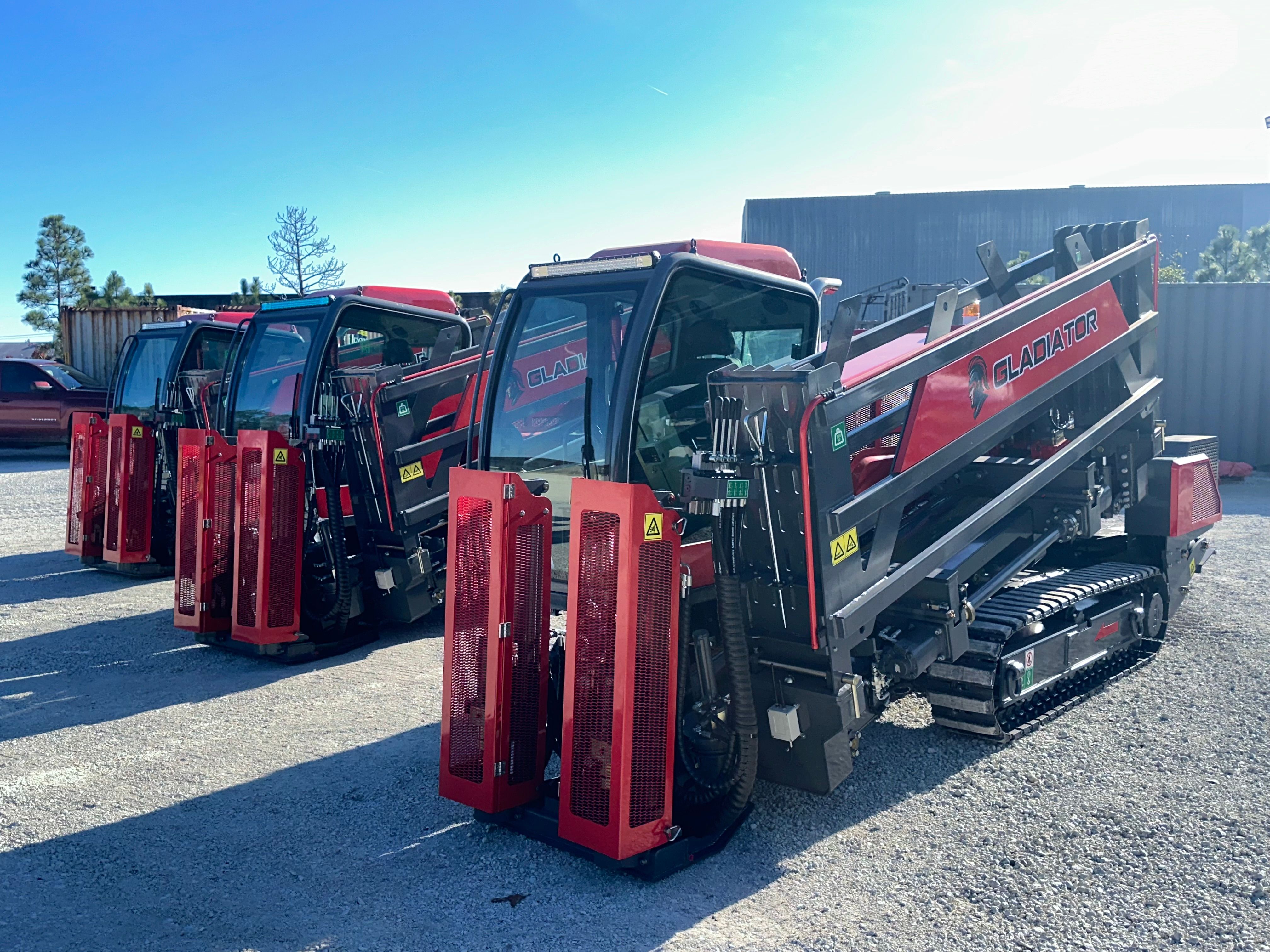Why Auger Boring Matters
Auger boring helps crews install underground pipes and conduits with less surface disruption. It often cuts project timelines because you do not need to dig large trenches or block major roads.
It works well in bustling cities where traffic flow is a concern. Instead of ripping up sidewalks or streets, teams can bore directly beneath them. This makes daily life easier for residents and businesses.
Who Should Read This Guide
This guide suits utility contractors who want a faster way to install water or sewer lines. It also helps civil engineers looking for practical solutions to meet municipal demands.
Project managers can learn how auger boring reduces noise and dust. They can plan better budgets and timelines by understanding its benefits and potential pitfalls.
What Is Auger Boring
Basic Definition
Auger boring is a method that creates horizontal tunnels for pipelines. It uses a rotating auger to cut and remove soil as a steel casing advances through the ground.
These rigs can handle short to medium distances. They rely on mechanical force rather than high-pressure fluids, which lowers the risk of fluid spills.
Common Applications
Many crews use auger boring to cross highways or rail corridors without traffic shutdowns. It suits projects that need tight control over line and grade.
An example is a city installing a new sewer pipe below a busy intersection. By avoiding a large excavation, the city reduces road closures and public complaints.
Why Choose Auger Boring
Advantages
Auger boring often costs less than some trenchless techniques. It needs smaller work pits, so you can start drilling faster.
It also limits disruption. Businesses and local residents appreciate fewer detours. In many cases, noise levels stay lower than traditional open-cut digging.
Limitations
Every site has different soil conditions. Dense rock layers or water-logged ground can slow down the auger process. That may lead to extra equipment or drilling time.
Diameter and distance also matter. If you need a very large or extremely long bore, other trenchless methods might be a better fit. Checking feasibility early helps avoid costly surprises.
Why Choose Auger Boring
Advantages
Many contractors pick auger boring when they want fewer disruptions at street level. This approach often allows smaller work areas, which can lower traffic closures. In some studies, crews report up to 30 percent faster setup times compared to open-cut methods.
It also works well for short or mid-range distances, especially in steady soil. Since the machine advances at a controlled pace, it can prevent large sinkholes or ground collapse. A real-world example is a city crew installing a sewer line under a two-lane road without halting traffic. They finished in half the time a typical trench would have required.
Pro Tip: Always check local regulations to see if there are incentives or permits geared toward trenchless projects. Some municipalities reward methods that reduce noise and surface damage.
Limitations
Auger boring has its boundaries. If you need a bore path longer than a few hundred feet, you might face higher stress on the auger. This can mean more wear on parts or slower progress. Thick rock layers can also lower efficiency because the auger must power through tough material.
Wet or shifting soil can cause poor spoil removal and can clog the auger flights. In one example, a contractor in a coastal region halted work mid-bore due to unexpected sand pockets. It took extra drilling fluid to keep the bore path clear.
Pro Tip: Conduct thorough soil sampling before you commit to auger boring. This step reveals possible trouble spots, helping you plan the right tools or backup methods.
How Auger Boring Works: A Step-by-Step Overview
Planning and Site Assessment
Every successful project starts with a soil investigation. Crews take samples to learn if the ground has clay, sand, or mixed materials. Based on these findings, they decide how to handle potential obstacles.
Next, teams outline the bore path. They select areas for launch and exit pits that minimize disruption. In a real-world case, a utility company mapped a path under a busy street to reach a commercial building without cutting asphalt.
Pro Tip: If ground-penetrating radar is available, use it to spot hidden rocks or utility lines. This reduces the chance of sudden changes that could derail the bore.
Equipment Setup
The auger rig sits in the launch pit, with the drill cradle precisely aligned to the target exit point. The crew sets the casing in line with the planned slope. Even a small tilt error can shift the path over a long distance.
They also ensure stable ground around the entry pit. In some cases, steel plates or shoring materials hold the sides in place. Once the rig is in position, they calibrate its thrust and torque levels for the expected soil density.
Pro Tip: Double-check the alignment before you begin drilling. A laser or sight gauge can help keep the bore path on track.
Drilling and Spoil Removal
As the auger rotates, it cuts and removes soil. The machine moves the spoil back through the casing and out at the launch pit. This steady removal prevents earth collapse around the bore path.
When the casing advances, it serves as a protective shell. Some crews add water or drilling fluid to reduce friction and keep the auger from overheating. In a busy urban setting, this controlled approach keeps surface damage to a minimum.
Pro Tip: Monitor spoil consistency at regular intervals. If the soil becomes too wet or clumpy, adjust your drilling fluid mix to maintain consistent removal.
Completion of the Bore
Once the auger reaches the exit pit, operators decide whether to remove or leave the casing in place. Many municipal projects leave it to house the final pipeline or conduit. This prevents soil from collapsing into the newly formed tunnel.
Finally, the crew checks alignment with survey tools. A small deviation might be okay for certain utility lines but could be a major issue if tight precision is required. Quality checks include verifying the bore diameter and slope.
Pro Tip: Keep a log of any adjustments made during drilling. This record helps predict maintenance needs for future projects and can guide improvements in your next bore.
Equipment Selection
Auger Boring Machine
Horsepower, torque, and overall size are key when choosing a suitable rig. A machine with higher torque handles denser soils and helps avoid stalling. A smaller rig may work for short bores or sites with limited workspace. Operators should compare new and used models based on current project needs and future plans. Some contractors purchase refurbished machines to save money but still expect reliable performance.
Pro Tip: Review past maintenance records before finalizing any used-machine deal to avoid expensive repairs later.
Augers and Cutting Heads
Augers come in different diameters and designs. Wider ones help move more soil, while narrow versions are easier to control. Cutting heads also matter. Hard-faced or carbide-tipped heads last longer in rough soils, especially when dealing with rocks. As an example, a crew installing a steel casing in clay discovered they needed more aggressive teeth to keep up with the pace.
Pro Tip: Match your auger and cutting head to the soil profile. This increases efficiency and lowers wear on the equipment.
Additional Accessories
Auger boring rigs often benefit from lubrication systems that reduce friction between the casing and surrounding earth. Steering guides can fine-tune the bore path, though these guides usually suit shorter jobs or softer ground. Tracking tools help the operator monitor direction, especially in areas with limited visibility. Pro Tip: Keep extra parts on hand in case any system fails mid-bore. A few hours of downtime can set a project back by days.
Setup and Operation
Safety Measures
Every site needs a solid safety plan. Launch and exit pits should be properly shored to prevent cave-ins. The crew must wear protective gear like helmets and gloves. In urban areas, teams also place warning signs or barriers to protect pedestrians.
Pro Tip: Daily safety checks lower the chance of accidents. This includes inspecting support braces and verifying no utility lines are exposed.
Site Preparation
Proper planning begins with marking all underground utilities to avoid hits. This usually involves local agencies or private utility-locating services. Next, the team checks the soil stability. Some soils require dewatering or reinforcing before drilling.
Pro Tip: Start the project early in the day. Weather conditions like heavy rain can change ground conditions and slow progress.
Monitoring and Adjustments
During drilling, operators track the bore’s alignment with gauges or laser devices. They watch the rig’s pressure and torque levels to see if the soil is getting tougher. If it does, they adjust rotational speed to keep the bore moving. Pro Tip: Logging performance data helps future bores. Document changes in soil texture, depth, and speed to refine methods in later projects.
Common Challenges
Dealing with Rock or Mixed Soils
Some sites have layers of gravel or fractured rock. Conventional augers may struggle in these conditions, causing higher wear or slower progress. Specialized cutting heads can chip through tough materials, but they add costs.
Pro Tip: Plan for extra time when geological surveys suggest mixed or rocky soil. Having the right head and spare parts reduces delay.
Groundwater and Collapsing Soil
Waterlogged ground can weaken bore walls and cause them to collapse around the casing. Dewatering pumps may be needed to drain excess water. In some cases, steel sheets or additional casing reinforcement keep the tunnel intact.
Pro Tip: Check local water tables and factor in seasonal changes. A low water level during one month may rise unexpectedly in the next, increasing risk.
Equipment Breakdowns
Auger rigs and cutting heads experience heavy stress, making breakdowns possible. Consistent maintenance reduces these surprises. Technicians should inspect wear components after each shift. Keeping spare belts or bearings is also wise.
Pro Tip: Create a regular maintenance schedule based on the manufacturer’s guidelines and the amount of daily use. Quick repairs keep the project on time and within budget.
Best Practices for Successful Bores
Regular Maintenance
Check augers, casings, and cutting heads after each bore. Look for signs of wear such as chipped teeth or thinning metal. Early detection keeps downtime low and avoids costly surprises.
Replacing worn parts helps crews maintain steady progress on site. In one real-world job, a contractor saved 20 percent on repair expenses by switching out dull cutting heads before they failed.
Pro Tip: Keep spare consumables ready so the team can swap parts on the spot.
Thorough Planning
A clear plan makes or breaks a project. Conduct soil tests and consult with regulatory bodies to confirm permit requirements. When stakeholders know the bore path in advance, it lowers the risk of last-minute changes.
Coordinate with local utilities to find hidden lines. In urban areas, a single map might be outdated. Verifying each location reduces accidental hits and prevents major delays.
Pro Tip: Set up a pre-bore meeting with all relevant agencies for smooth collaboration.
Training and Experience
A well-trained team can adapt when things go wrong. Holding regular workshops on new tools or drilling methods improves safety and efficiency. Crews who understand the nuances of their rigs can often fix small issues on site.
Studies show that trained operators deliver faster bores and cleaner exits. In one case study, a team that completed advanced auger workshops finished a municipal sewer job two days ahead of schedule.
Pro Tip: Keep a record of completed training. Use it to assign tasks based on each member’s skill set.
Real-Life Examples or Case Studies
Short City Street Utility Upgrade
A local government needed to install a new sewer line under a busy urban road. Traditional digging would have caused traffic jams and noise complaints. Instead, the crew chose auger boring to minimize street closures and keep the public happy.
They completed the project in five days with fewer detours. Most drivers did not notice any construction happening beneath the road.
Pro Tip: Document before-and-after traffic flow data to show project benefits to city planners.
Rural Pipeline Extension
A farm community needed a longer water line to serve newly built homes. Soil tests revealed clay mixed with sand layers. The drilling team adapted by adjusting rotational speed and adding a larger cutting head for the sandy sections.
Despite the challenging mix, they finished on time. Nearby landowners appreciated that their fields remained largely intact.
Pro Tip: Always consult a geotechnical engineer for soil-specific advice when you tackle extended bores.
Conclusion and Next Steps
Recap of Key Points
Auger boring offers a trenchless way to install pipes or conduits with less disruption. Proper planning, right-sized equipment, and trained crews are essential to success. Inspections after each bore keep machines ready for the next job.
When teams follow these steps, they can reduce costs and finish projects faster. This efficiency benefits both contractors and the community by cutting down on noise, traffic delays, and surface damage.




